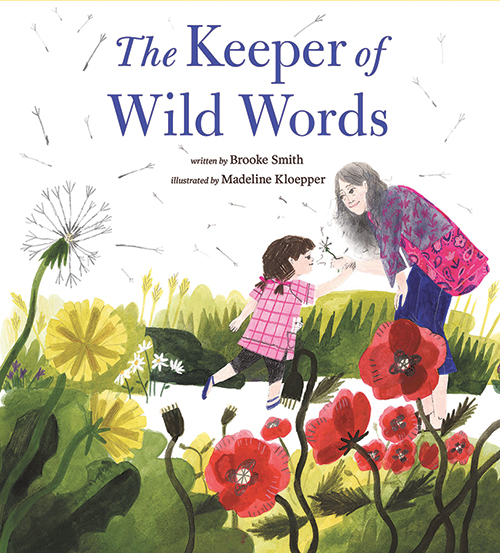
The Keeper of Wild Words
Reviewed by Margaret T. Walden
May 1, 2021
By Brooke Smith, illustrated by Madeline Kloepper. Chronicle Books, 2020. 62 pages. $18.99/hardcover; $11.99/eBook. Recommended for ages 5–8.
What are wild words? At summer’s end, Brook, a young girl, has come to visit her beloved grandmother Mimi. Brook and Mimi each have a problem. The grandmother, a wordsmith, has discovered that some of her favorite nature words are disappearing. She tells Brook, “If we don’t use words, they can be forgotten. And if they’re forgotten . . . they disappear.” She invites Brook to become her “Keeper of Wild Words.” Brook is hoping to find something for show-and-tell at school the next day.
With a list of 19 nature words and a picnic lunch, the two spend their day together exploring nearby gardens, meadows, and woods. The pair use all their senses to find acorns, berries, porcupines, starlings, minnows, until all on their list are experienced. Now as Keeper of the Wild Words, Brook has a story for show and tell.
Splashy colors, exuberant illustrations, and varying typefaces make this story a page-turner. The illustrator uses mixed media and Photoshop to present the garden, meadow, pond, and woods that our characters explore. The author explains on the back pages her reason for writing this particular story: She read an article about how the Oxford Junior Dictionary removed over 100 natural words from its pages. So she decided to write a book to bring them to life, as she “cannot imagine a world without these beautiful words in it.”
The book reads well aloud because of the poetic style of the author. It will appeal especially to those children who are in a language spurt, wanting to know more and more names of those things they see often. Young children like colorful words and long ones that are full of meaning and crispness. Since we are all still living in the midst of a horrible pandemic, and looking for refreshing activities, the outdoors in any size welcomes and even compels us forth. So find a podmate, make a word list, and go scavenging. You might even illustrate or photograph your findings. Use the envelope at the back of the book or make your own. Wild words must be used and experienced if they are to be remembered.
This book has reminded me of wildflower walks at Friends Lake in Michigan, hunting for horsetail grass at Camp NeeKauNis in Ontario, turning over rocks to find pill bugs in our backyard, and being surprised when an unexpected plant starts to grow in our spring garden. Nature is not to be ignored, and Quakers understand its value. The outside is a place of safety and delight.
Margaret T. Walden enjoys winter walks and spring explorations with Leslie (her podmate) in Lakewood, Ohio. She Zooms for meeting for worship in Cleveland, Ohio.


